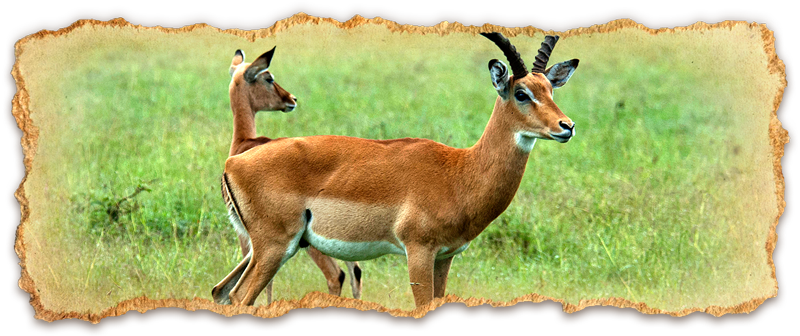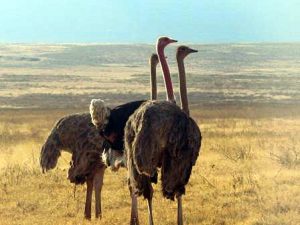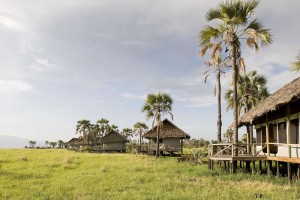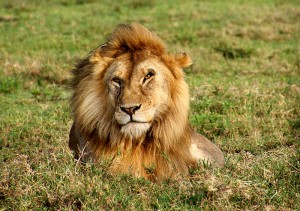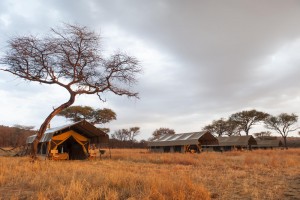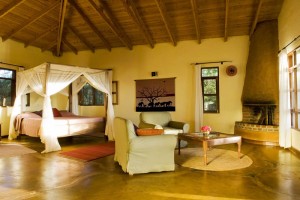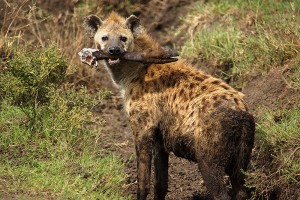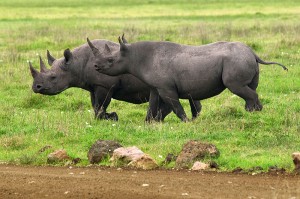One-Week Tembo Escape
~ Deluxe ~
~ Deluxe ~
The best season for this departure is June—November
Safari Overview
Our Deluxe One-Week Tembo Safari offers accommodations at deluxe tented camps and lodges and grants the opportunity to learn and discover Tanzania’s most popular northern parks, such as Tarangire National Park, Ngorongoro Crater, and the boundless Serengeti Plains.
7 days
6 nights
- Safari Highlights:
- Observe an impressive bird’s diversity at Tarangire National Park.
- Witness numerous herds of elephant in Tarangire National Park.
- See the unique diversification of carnivores in the vast Serengeti National Park.
- Discover historical local culture with a stop at Maasai Village.
- Capture the abundance and diversity of wildlife including the rare black rhino in the Ngorongoro Crater.
- Enjoy a week full of spectacular sightings in Tanzania’s most popular Northern Parks.
Itinerary
Deluxe One-Week Tembo Safari - Discover Northern Tanzania
Day 1
Arrive in Arusha, Tanzania
You will arrive at Kilimanjaro International Airport (JRO) by your international flight. Your driver guide will meet you at you at the airport and drive you to Kibo Palace Hotel (or similar) for overnight (Bed & Breakfast).
About Kibo Palace Hotel
Day 2
Tarangire National Park
After breakfast, drive straight to Tarangire National Park for a full-day game drive with picnic lunch. Late afternoon, drive to your tented camp. Dinner and overnight will be at Maramboi Tented Camp (or similar).
About Tarangire National Park
About Maramboi Tented Camp
Day 3
Serengeti National Park
After breakfast, drive to Serengeti National Park with picnic lunch. Following entry to the Serengeti checkpoint, get ready for an afternoon game drive en route to your Tented Camp! Dinner and overnight will be at Serengeti Kati Kati Tented Camp (or similar).
About Serengeti National Park
About Serengeti Kati Kati Tented Camp
Day 4
Full-Day Game Drives in the Serengeti
Enjoy a morning and afternoon game drive in Serengeti National Park with hot lunch served at your camp (or full-day game drives with picnic lunch). Dinner and overnight will be at Serengeti Kati Kati Tented Camp (or similar).
Day 5
Central Serengeti and Karatu
After breakfast, do a morning game drive in Central Serengeti till noon, then enjoy your picnic lunch at the Serengeti exit gate. Following lunch, proceed to Karatu where your lodge is located. Dinner and overnight will be at Ngorongoro Farm House Valley (or similar).
About Ngorongoro Farm House Valley
Day 6
Game Drives in the Crater
After an early breakfast, leave the lodge at 7:00 AM and drive straight to Ngorongoro Crater for a full-day game drive. In the afternoon, enjoy a picnic lunch and continue with more game run. Dinner and overnight will be at Ngorongoro Farm House Valley (or similar).
About Ngorongoro Crater
Day 7
Return to Arusha
After breakfast, you will be driven back to Arusha where you’ll have lunch and a dayroom at Kibo Palace Hotel. In the evening, you’ll be transferred to Kilimanjaro International Airport (JRO) for your international flight back home.
- Inclusions:
- Respective accommodations or similar throughout as indicated.
- 3-meals a day as shown (except Day 1 at Bed & Breakfast).
- All game drives with photographic roof hatch land cruiser operated by a professional driver guide.
- All transfers as per the itinerary.
- Complimentary bottled water during game drives.
- Tips to waiters.
- All national park entry fees and Ngorongoro Crater service fees.
- Visit to Maasai Village.
- Exclusions:
- Entry VISA and local airport tax.
- Personal and baggage insurance.
- Excess baggage charges levied by airline.
- Meals and beverages other than specified.
- Tips to your driver guide.
- Tips to porters.
- Cost for anything not mentioned on the list above.
Accommodations
Our One-Week Tembo SafariFeatures Deluxe Accommodations
Kibo Palace Hotel - Arusha
Named after the highest peak of Africa’s highest mountain – Mt Kilimanjaro, Kibo Palace Hotel is one of Arusha’s most exciting and innovative luxury hotels; contemporary, conductive and unconventional, a luxury hotel with a new attitude. Located in the heart of Arusha, gateway to the world’s most renowned game parks, it is a 45-minute drive from Kilimanjaro International Airport (JRO) and a 15-minute walk from Arusha city center and the Arusha International Conference Center. [learn more]
Maramboi Tented Camp - Tarangire National Park
An impressive landscape from the Rift Valley gives the visitor an amazing natural welcome to an area extraordinarily rich in wildlife. Maramboi Tented Camp offers stunning views of the Manyara National Park, Rift Valley, Ngorongoro highlands and on clear days even Oldonyo Lengai a sacred mountain to the Maasai. The camp offers 40 spacious tents built on ample wooden decks. Among them there are 26 standard rooms, 10 suites and 2 units with 2 rooms interconnected; ideal for families with children. They all have en suite facilities and private verandas with 24 hours 220V electric lighting. [learn more]
Serengeti Kati Kati Tented Camp - Serengeti National Park
Serengeti Kati Kati Tented Camp is a mobile tented camp in Central Serengeti, strategically located to cover the vast Serengeti Plains. The camp offers comfortable accommodation and a unique opportunity to enjoy a real safari camp experience. The camp is only a two hour scenic drive from Olduvai Gorge Museum and Grumeti River. A cozy mess tent is located in the center of the camp where meals are served. The campfire is ready every evening for appetizers and snacks before dinner. Throughout the camp there are 10 tents with en suite facilities. [learn more]
Ngorongoro Farm House - Karatu (and Near Ngorongoro Area)
Ngorongoro Farm House is a small, exclusive lodge facing the Oldeani Volcano. It nestles in a 500 acre coffee farm, located just 4 km from the Lolduare entrance to the Ngorongoro Conservation Area. Featuring 52 Large Double-chalet Rooms. Of the Standard Rooms there are 25 twins, 17 doubles (king bed), 7 triples, 6 interconected rooms, en-suite bathrooms with built in showers, and mosquito nets. Of the Suite Rooms there are 3 doubles (king bed). All Rooms have large beds, a private verandah, walkways, and telephones. [learn more]
Named after the highest peak of Africa’s highest mountain – Mt Kilimanjaro, Kibo Palace Hotel is one of Arusha’s most exciting and innovative luxury hotels; contemporary, conductive and unconventional, a luxury hotel with a new attitude. Located in the heart of Arusha, gateway to the world’s most renowned game parks, it is a 45-minute drive from Kilimanjaro International Airport (JRO) and a 15-minute walk from Arusha city center and the Arusha International Conference Center. [learn more]
Maramboi Tented Camp - Tarangire National Park
An impressive landscape from the Rift Valley gives the visitor an amazing natural welcome to an area extraordinarily rich in wildlife. Maramboi Tented Camp offers stunning views of the Manyara National Park, Rift Valley, Ngorongoro highlands and on clear days even Oldonyo Lengai a sacred mountain to the Maasai. The camp offers 40 spacious tents built on ample wooden decks. Among them there are 26 standard rooms, 10 suites and 2 units with 2 rooms interconnected; ideal for families with children. They all have en suite facilities and private verandas with 24 hours 220V electric lighting. [learn more]
Serengeti Kati Kati Tented Camp - Serengeti National Park
Serengeti Kati Kati Tented Camp is a mobile tented camp in Central Serengeti, strategically located to cover the vast Serengeti Plains. The camp offers comfortable accommodation and a unique opportunity to enjoy a real safari camp experience. The camp is only a two hour scenic drive from Olduvai Gorge Museum and Grumeti River. A cozy mess tent is located in the center of the camp where meals are served. The campfire is ready every evening for appetizers and snacks before dinner. Throughout the camp there are 10 tents with en suite facilities. [learn more]
Ngorongoro Farm House - Karatu (and Near Ngorongoro Area)
Ngorongoro Farm House is a small, exclusive lodge facing the Oldeani Volcano. It nestles in a 500 acre coffee farm, located just 4 km from the Lolduare entrance to the Ngorongoro Conservation Area. Featuring 52 Large Double-chalet Rooms. Of the Standard Rooms there are 25 twins, 17 doubles (king bed), 7 triples, 6 interconected rooms, en-suite bathrooms with built in showers, and mosquito nets. Of the Suite Rooms there are 3 doubles (king bed). All Rooms have large beds, a private verandah, walkways, and telephones. [learn more]
Destinations
Discover the World's Abundant Wildlife in Northern Tanzania
Tarangire National Park
Herds of up to 300 elephants scratch the dry river bed for underground streams, while migratory wildebeest, zebra, buffalo, impala, gazelle, hartebeest and eland crowd the shrinking lagoons. It’s the greatest concentration of wildlife outside the Serengeti ecosystem – a buffet for predators. The swamps, tinged green year round, are the focus for 550 bird varieties, the most breeding species in one habitat anywhere in the world.
Tanzania’s oldest and most popular national park, also a World Heritage Site and also proclaimed a Worldwide Wonder, the Serengeti is famed for its annual migration, when some two million hooves pound the open plains, as more than 200,000 zebra and 300,000 Thomson’s gazelle join the wildebeest’s trek for fresh grazing. Yet even when the migration is quiet, the Serengeti offers arguably the most scintillating game-viewing in Africa: great herds of buffalo, smaller groups of elephant and giraffes, and hundreds upon hundreds of eland, topi, kongoni, impala and Grant's gazelle.
The spectacle of predators versus prey dominates Tanzania's greatest park. Golden–mained lion prides feast on the abundance of plain grazers. Solitary leopards haunt the Acacia trees lining the Seronera River, while high densities of cheetahs prowling the southeastern plains. Almost uniquely, all three African jackal species occur here, alongside the Spotted hyena and a host of more elusive small predators, ranging from the insectivorous aardwolf to the beautiful serval cat.
But there is more to Serengeti than large mammals. 500–plus bird species, ranging from the outsized ostrich and bizarre secretary bird of the open grass-land, to the Black eagles that soar effortlessly above the Lobo Hills.
The Ngorongoro Crater is only 3% of the total area of Ngorongoro Conservation Area (NCA), but it is home to more than 75% of all the game animals found in NCA. Technically known as a caldera, Ngorongoro crater is the largest unflooded and unbroken caldera in the world with 19.2 km in diameter, 2000 feet deep, and 102 sq miles in area. The rich pasture and permanent water of the crater floor supports a large resident population of wildlife of up to 25,000 predominantly grazing animals. These include wildebeest, zebra, buffalo, kongoni, gazelle, warthog and eland. The swamps and forest provide additional resources for hippo, elephant, waterbuck, reedbuck, and bushbuck, baboons and Vervet monkeys. The steep inner slopes provide habitat for dik-dik and the rare Mountain reedbuck.
Jackals thrive in the crater and bat-eared foxes live in the short grass area. Predatory animals such as lion, leopard, cheetah and serval cats live off the abundant wildlife; and large packs of hyenas roam the crater, making their own kills and scavenging from others. The crater is a dynamic and constantly changing ecosystem and the numbers and proportion of some animals including lions and Black rhinos have fluctuated considerably over the past 30 years. Thanks to anti-poaching patrols in the crater and the whole ecosystem, the Black rhino population is coming back. Ngorongoro crater is one of the few places in East Africa where visitors can see a rhino. [learn more]
Herds of up to 300 elephants scratch the dry river bed for underground streams, while migratory wildebeest, zebra, buffalo, impala, gazelle, hartebeest and eland crowd the shrinking lagoons. It’s the greatest concentration of wildlife outside the Serengeti ecosystem – a buffet for predators. The swamps, tinged green year round, are the focus for 550 bird varieties, the most breeding species in one habitat anywhere in the world.
- Location: 118 km (75 miles) southewest of Arusha
- Getting there: Easy drive from Arusha or Lake Manyara following a surfaced road to within 7km (four miles) of the main entrance gate; can continue on to Ngorongoro Crater and the Serengeti
- What to do: Guided walking safaris; day trips to Maasai and Barabaig villages, as well as to the hundreds of ancient rock paintings in the vicinity of Kolo on the Dodoma Road
- Learn more
Tanzania’s oldest and most popular national park, also a World Heritage Site and also proclaimed a Worldwide Wonder, the Serengeti is famed for its annual migration, when some two million hooves pound the open plains, as more than 200,000 zebra and 300,000 Thomson’s gazelle join the wildebeest’s trek for fresh grazing. Yet even when the migration is quiet, the Serengeti offers arguably the most scintillating game-viewing in Africa: great herds of buffalo, smaller groups of elephant and giraffes, and hundreds upon hundreds of eland, topi, kongoni, impala and Grant's gazelle.
The spectacle of predators versus prey dominates Tanzania's greatest park. Golden–mained lion prides feast on the abundance of plain grazers. Solitary leopards haunt the Acacia trees lining the Seronera River, while high densities of cheetahs prowling the southeastern plains. Almost uniquely, all three African jackal species occur here, alongside the Spotted hyena and a host of more elusive small predators, ranging from the insectivorous aardwolf to the beautiful serval cat.
But there is more to Serengeti than large mammals. 500–plus bird species, ranging from the outsized ostrich and bizarre secretary bird of the open grass-land, to the Black eagles that soar effortlessly above the Lobo Hills.
- Location: 335km (208 miles) from Arusha, stretching north to Kenya and bordering Lake Victoria to the west
- What to do: Hot-air balloon safaris, game viewing. Visit neighbouring Lake Victoria, Olduvai Gorge
- Best seasons to visit:
- December–June to see the wildebeest migration
- June–October to see resident animals and predators (however, mid-March/April is the peak of the rain season)
- Learn more
The Ngorongoro Crater is only 3% of the total area of Ngorongoro Conservation Area (NCA), but it is home to more than 75% of all the game animals found in NCA. Technically known as a caldera, Ngorongoro crater is the largest unflooded and unbroken caldera in the world with 19.2 km in diameter, 2000 feet deep, and 102 sq miles in area. The rich pasture and permanent water of the crater floor supports a large resident population of wildlife of up to 25,000 predominantly grazing animals. These include wildebeest, zebra, buffalo, kongoni, gazelle, warthog and eland. The swamps and forest provide additional resources for hippo, elephant, waterbuck, reedbuck, and bushbuck, baboons and Vervet monkeys. The steep inner slopes provide habitat for dik-dik and the rare Mountain reedbuck.
Jackals thrive in the crater and bat-eared foxes live in the short grass area. Predatory animals such as lion, leopard, cheetah and serval cats live off the abundant wildlife; and large packs of hyenas roam the crater, making their own kills and scavenging from others. The crater is a dynamic and constantly changing ecosystem and the numbers and proportion of some animals including lions and Black rhinos have fluctuated considerably over the past 30 years. Thanks to anti-poaching patrols in the crater and the whole ecosystem, the Black rhino population is coming back. Ngorongoro crater is one of the few places in East Africa where visitors can see a rhino. [learn more]
Yes, I'm interested!
Have questions? Ready to book? Drop us a line and we'll get right back with you!
Use this form to book the Deluxe One-Week Tembo Escape.
You may customize a Signature Safari Itinerary to your liking, or simply design an itinerary from scratch!



